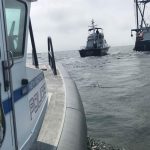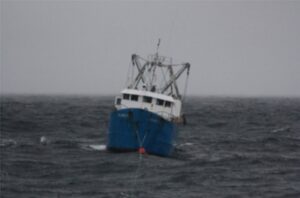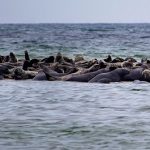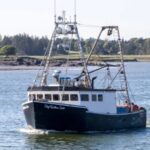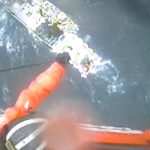Tag Archives: ocean changes
Year in Review: Ocean changes upend North Coast fisheries
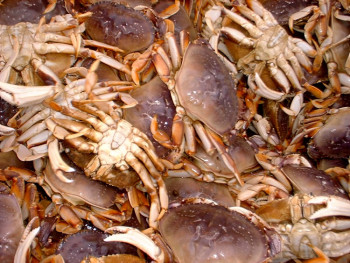 In any other year, the large bins of Dungeness crab that are loaded dockside in this busy fishing village and rolled out by truck to be sold and served during the holidays would seem like no big deal. But after an unprecedented delay in the 2015-16 commercial season forced local crabbers to leave their boats tied up through winter and on into spring, the tons of meaty crustaceans landed in port this month have been a welcome sign of normalcy restored, if only for a moment. For here on the edge of the Pacific, where commercial fishing remains a way of life, once reliable ocean rhythms have been seriously unsettled of late, confounding those who depend on predictable, seasonal cycles and highlighting future uncertainties. Even the current Dungeness season lurched off to a bumpy start, with the fishery opening piecemeal and mostly behind schedule, a symptom of widespread marine anomalies that have prevailed for the past three years, threatening everything from seabirds and sea lions to treasured catches such as salmon and abalone. Read the story here 10:04
In any other year, the large bins of Dungeness crab that are loaded dockside in this busy fishing village and rolled out by truck to be sold and served during the holidays would seem like no big deal. But after an unprecedented delay in the 2015-16 commercial season forced local crabbers to leave their boats tied up through winter and on into spring, the tons of meaty crustaceans landed in port this month have been a welcome sign of normalcy restored, if only for a moment. For here on the edge of the Pacific, where commercial fishing remains a way of life, once reliable ocean rhythms have been seriously unsettled of late, confounding those who depend on predictable, seasonal cycles and highlighting future uncertainties. Even the current Dungeness season lurched off to a bumpy start, with the fishery opening piecemeal and mostly behind schedule, a symptom of widespread marine anomalies that have prevailed for the past three years, threatening everything from seabirds and sea lions to treasured catches such as salmon and abalone. Read the story here 10:04
NOAA and Sea Grant fund $800,000 in research to understand effects of ocean changes on iconic Northeast marine life
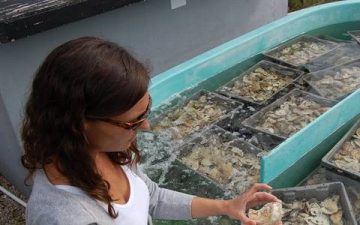 NOAA’s Ocean Acidification Program (OAP) and the Northeast Sea Grant Programs joined together to prioritize and fund new research on how ocean acidification is affecting marine life including lobsters, clams, oysters, mussels and sand lance that are so important to the Northeast region. Funding includes $800,000 in federal funds from the two programs with an additional $400,000 non-federal match. NOAA and Sea Grant drew on the work of the Northeast Coastal Acidification Network to set these priorities. The Network is made up of concerned fishermen, scientists, resource managers, and representatives from federal and state agencies who work together to identify critical vulnerabilities in the northeast, including regionally important and economically significant marine resources that are vital to the many livelihoods and the culture of New England. Read the rest here 00:23
NOAA’s Ocean Acidification Program (OAP) and the Northeast Sea Grant Programs joined together to prioritize and fund new research on how ocean acidification is affecting marine life including lobsters, clams, oysters, mussels and sand lance that are so important to the Northeast region. Funding includes $800,000 in federal funds from the two programs with an additional $400,000 non-federal match. NOAA and Sea Grant drew on the work of the Northeast Coastal Acidification Network to set these priorities. The Network is made up of concerned fishermen, scientists, resource managers, and representatives from federal and state agencies who work together to identify critical vulnerabilities in the northeast, including regionally important and economically significant marine resources that are vital to the many livelihoods and the culture of New England. Read the rest here 00:23


































